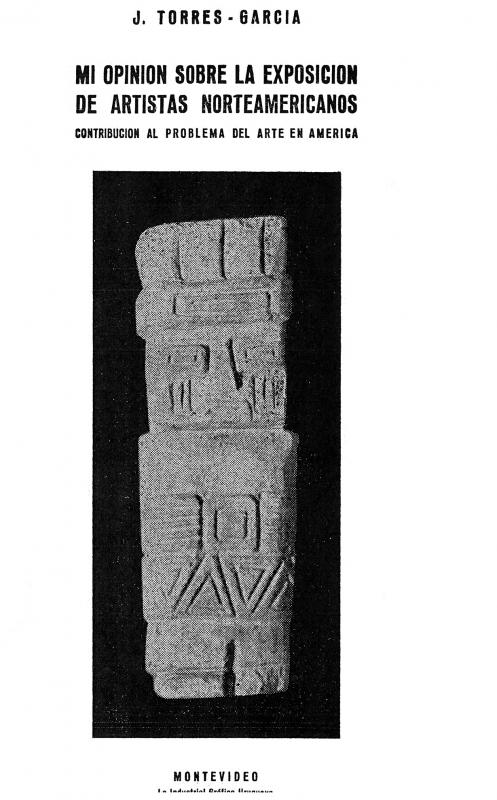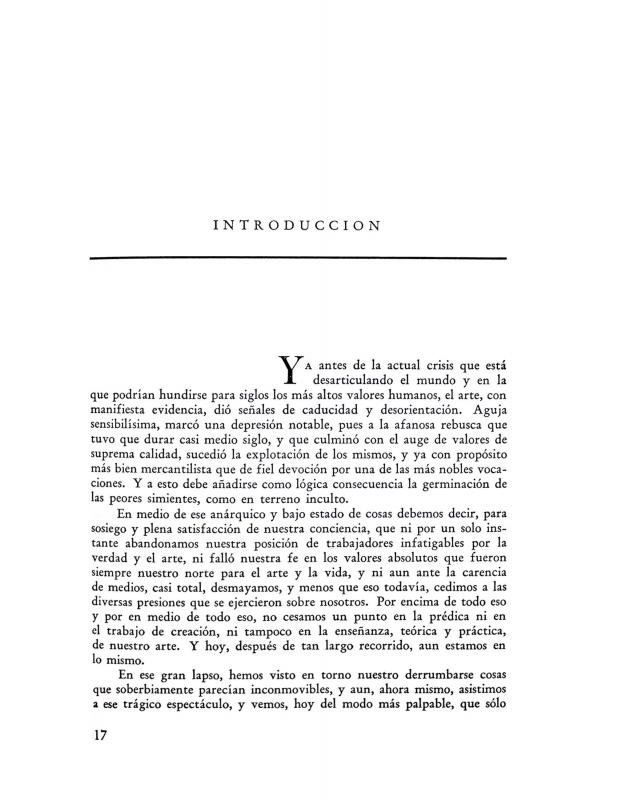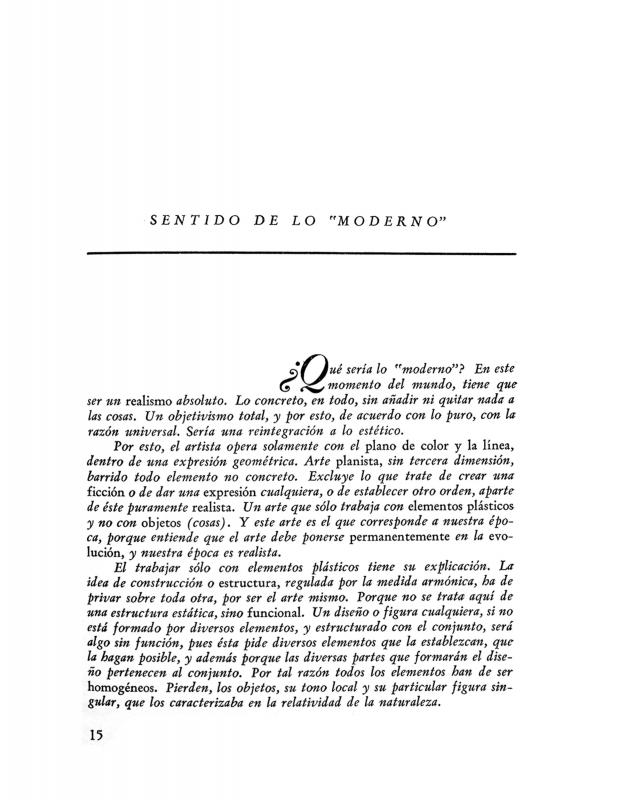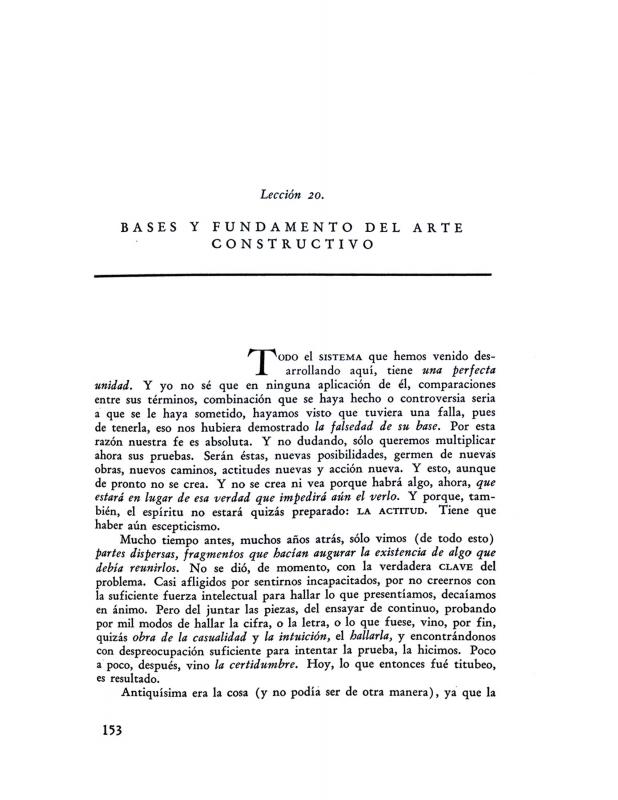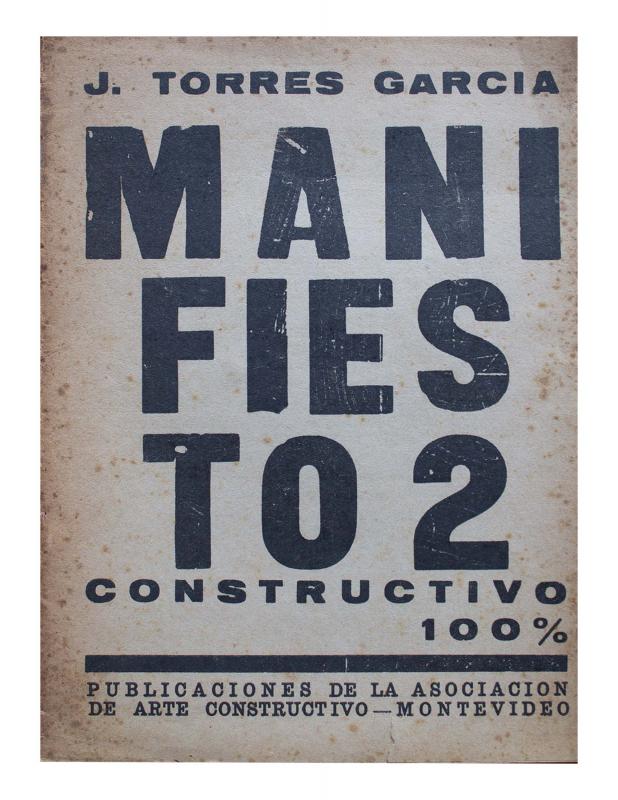1944 was an especially prolific year for Joaquín Torres García (1874–1949). Working with a group of students from his Taller (TTG), he created a number of murals at the Pabellón del Hospital Saint Bois in Montevideo. He also won the Grand Prize for painting at the VIII Salón Nacional de Bellas Artes with an oil painting, El Mentón, a landscape that was based on the pencil sketches he had made while in Europe. That was also when he published his book Universalismo Constructivo (Buenos Aires: Editorial Poseidón, 1944), the most complete collection he had ever made of the classes he had taught and lectures he had given in Montevideo. Under those circumstances, it is unsurprising that 1944 was also the year when he endured his critics’ most virulent attacks. One of those critiques was voiced by José Cúneo (1887–1977) who, though already an acclaimed painter at the time, regularly attended the talks JTG gave after his return to Montevideo in April 1934. On this occasion Cúneo adopts an odd position, seeming to defend the fundamentals of JTG’s constructivism against what he considered the maestro’s flagrant betrayal of those very principles when he submitted his conventional landscape painting to the VIII Salón Nacional. In his article, Cúneo undergirds his views with an extensive analysis of certain principles that, at one time, JTG endorsed in support of “constructive painting.” Cúneo describes this painting as being derived from Cubism, and provides his own interpretation of the European avant-gardes and their legacy midway through the century. He does not appear to take into account that, at his 500th lecture (in 1940), the Uruguayan maestro had announced that he was no longer trying to establish a Constructive Art school in Uruguay because he had encountered too many obstacles to the project. While not renouncing the doctrine, he said he was ready to be more flexible, and accepted landscape painting as long as it was “constructed” according to the Universal Rule. On the other hand, the first compliments on the murals at the Saint Bois hospital came from Dr. Alfredo Cáceres and his wife, Esther de Cáceres, Dr. Pablo Purriel, the architect Juan Menchaca, and Guido Castillo and Sarandy Cabrera, the editors of Removedor, the TTG magazine. Praise was also forthcoming from two distinguished representatives of the visual arts in Argentina, Julio Payró and Jorge Romero Brest. In his articles, Cúneo offered punctilious explanations about the principles of constructivism, and also made some veiled remarks about the compliments on the murals at the Saint Bois hospital. Given the complex grammar of the constructivist doctrine, he wondered sarcastically (in an elliptical reference to Dr. Alfredo Cáceres) “whether a psychiatrist could help to elucidate?” And “Might a snob who is always ready to applaud everything he considers to be new and strange have an opinion?” (a clear reference to Guido Castillo); “Or how about a dilettante who wants to know just a little about everything without making any effort or maintaining any consistency?” (a possible allusion to Sarandy Cabrera’s lively personality). Aside from these digressions, that merely indicate jealousy and some sort of personal malaise that flared up during debates at that time, it is clear that Cúneo felt—as can be seen in his manuscripts now archived at the Archivo Histórico Nacional—a sincere desire to explore JTG’s artistic thinking, interpreting it as an eclectic derivative of the European geometric avant-gardes. This reveals his level of intellectual honesty as well as the naivety (which he readily acknowledged) that informed his speculations on modern art. [As complementary reading see, in the ICAA digital archive, the following articles written by Joaquín Torres García: “Con respecto a una futura creación literaria” (doc. no. 730292); “Lección 132. El hombre americano y el arte de América” (doc. no. 832022); “Mi opinión sobre la exposición de artistas norteamericanos: contribución” (doc. no. 833512); “Nuestro problema de arte en América: lección VI del ciclo de conferencias dictado en la Facultad de Humanidades y Ciencias de Montevideo” (doc. no. 731106); “Introducción [en] Universalismo Constructivo” (doc. no. 1242032); “Sentido de lo moderno [en Universalismo Constructivo]” (doc. no. 1242015); “Bases y fundamentos del arte constructivo” (doc. no. 1242058); and “Manifiesto 2, Constructivo 100%” (doc. no. 1250878)].



